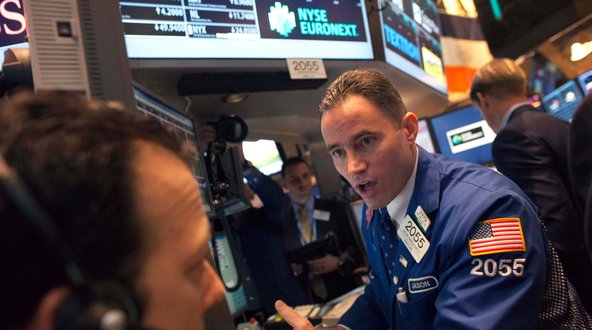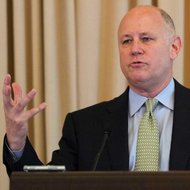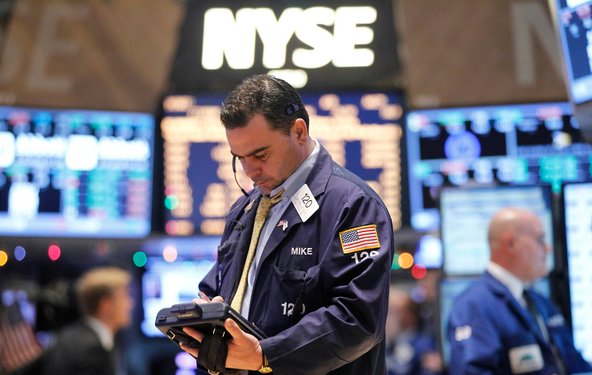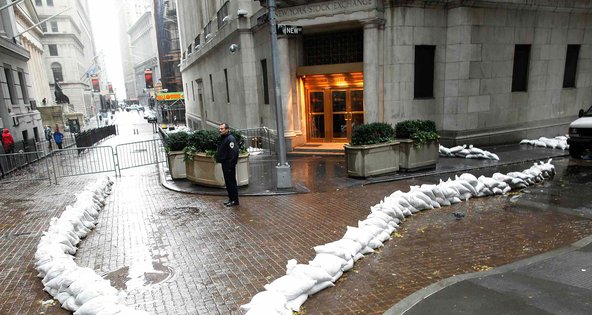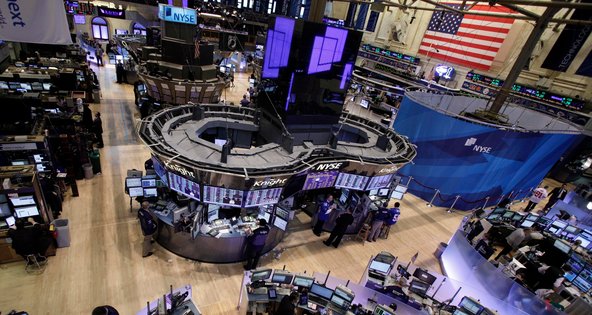The Dow Jones industrial average, which measures the performance of 30 blue-chip companies, rose more than 150 points in afternoon trading on Tuesday, surpassing its previous record close of 14,164.53, which it achieved nearly five and a half years ago, as well as its record intraday high, set around the same time, of 14,198.10.
Of course, a few things have happened since October 2007. The housing market collapsed, the financial system went into meltdown, the European Union started to fray and politicians dragged the United States through an on-off-on-again fiscal imbroglio.
But stocks managed to move beyond all that.
Since a low point in March 2009, the Dow Jones index has more than doubled, stunning even the most seasoned stock market watchers.
“What’s amazing about this bull market is that people still don’t think it’s real,” said Richard Bernstein, chief executive of Richard Bernstein Advisors, a money management firm. “We think this could be the biggest bull market of our careers.”
On Tuesday in particular, leading indexes abroad were rising after the Chinese government announced that it would step up spending and European data showed that retail sales there have been stronger than expected.
After the bell sounded at the New York Stock Exchange, stocks were pushed up more after a reading on the service sector in the United States showed that it had risen to its highest level of activity in a year, surprising analysts.
“Given that the service sector accounts for close to 85 percent of the U.S. economy, the strong performance on this index suggests that the overall recovery may be continuing to build on the positive momentum at the end of the year,” said Millan Mulraine, a senior strategist at TD Securities. There are some important caveats to the record, however. The Dow is a rather narrow measure of the stock market, so it can provide a somewhat distorted picture of the market’s performance.
At 1,541.81 points in Tuesday afternoon trading, the much broader Standard Poor’s 500-stock index was still off its nominal high of 1,565.15, also set in October 2007.
After taking inflation into account, both indexes are down from their earlier highs in 2000. And, on an inflation-adjusted basis, the S.P. 500 is down even after factoring in returns from dividend payments.
Still, American stocks are far ahead of their foreign counterparts. The Euro Stoxx 50, a barometer of euro zone blue chips, ended Tuesday at 2,683.02 points, off its record high of 5,464.43 reached in March 2000, while the FTSE 100 in London was at 6,431.95, compared to a record of 6,930.20 in December 1999.
In Asia, the Nikkei 225-share index in Tokyo closed Tuesday at 11,683.45; it reached its high of 38,916 points in December 1989. And the Hang Seng index in Hong Kong finished at 22,560.50, versus a high of 31,638 points in October 2007.
Still, despite its flaws, the Dow Jones average is the recognizable face of the stock market to many Americans, and it contains some of the best-known American corporations, like Wal-Mart, Coca-Cola, General Electric and International Business Machines.
The stock prices of some of the companies in the index have more than doubled since that low point in 2009. For instance, American Express is up more than 400 percent. After the crash of 1929, it took 25 years for the Dow to get back to the nominal level it plunged from. The severe economic contractions of the 1930s, during which scores of banks collapsed, weighed heavily on stocks.
But one essential government institution did things differently after the 2009 low point, and that has bolstered the stock market. The Federal Reserve has added more than $3 trillion of monetary stimulus to the economy and more than $1 trillion of bailout loans to financial firms since the 2008 financial crisis. This was done to prevent a widespread banking crash and help the wider economy.
Anne Bagamery contributed reporting from Paris.
Article source: http://www.nytimes.com/2013/03/06/business/daily-stock-market-activity.html?partner=rss&emc=rss
